 新闻详情
新闻详情
 新闻详情
新闻详情
万双网讯 为激发学生科学探究的内驱力,培养学生面向未来的思维技巧,12月2日,万科双语学校科学与人工智能老师在五年级开展了理论与实践相结合的STEAM融合课程,带领学生制作太阳能热水器及测量太阳能热水器的升温及保温情况。
VBS News Net: To motivate students to research on science and cultivate future-centric thinking skills, the STEAM integration class to combine theories and practice for Primary 5 students was conducted by AI and Science teachers on 2nd December at VBS to lead students to make solar power water heaters and measure their conditions to maintain the temperatures.
本堂STEAM课(《做个太阳能热水器》)筹备了一个多月,由科学老师李音与人工智能课老师彭平共同打造。上课伊始,在老师的引领和孩子的热烈讨论中,同学们知道了太阳能热水器是一种光热转换器,具有节能、环保、安全的优点,以及太阳能热水器的效能和所采用的材料、结构、运用的原理有关。但是产品的设计,不仅要考虑构造,还要考虑材料的选择、依据怎样的科学原理、如何方便实用以及怎么能精准地测得温度的变化。这些都是本节课孩子们运用5c能力去解决的一系列问题。
After a month's preparation, VBS Science teacher Ms. Li Yin and AI teacher Mr. Peng Ping delivered this STEAM class. Guided by teachers at the beginning of class, students began their discussions and understood that solar power water heater converted light to energy with the advantages of energy-saving, environmental-friendly and safe as well as principles, efficiency and materials used. Yet the design. This was the key issues for 5C students to solve.
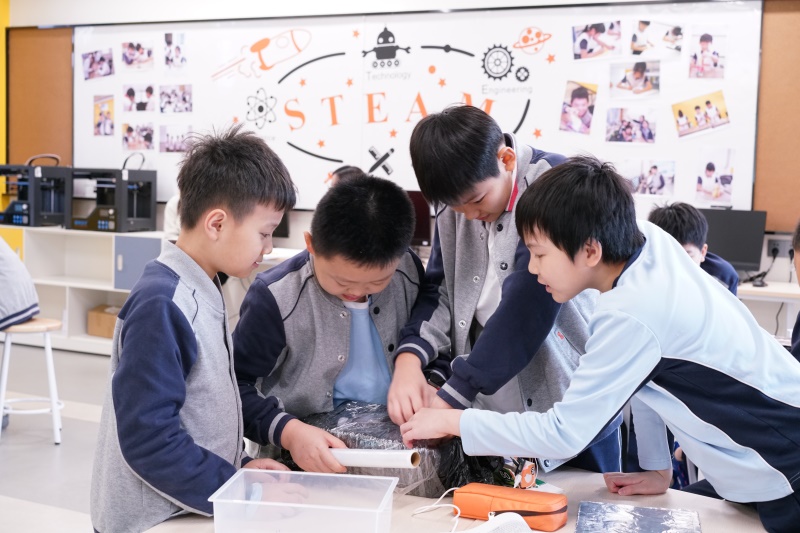
李音老师和彭平老师根据研究任务和要求进行了有目的的设计,计划让孩子们在讨论中发现问题,通过人工智能学到的知识和科学知识的铺垫,再经过团队的协作和努力,精细地解决问题。为了补充更多的人工智能知识,彭平老师对学生进行了3个课时的教学,让学生们学会用Linkboy编程编写测量温度的程序,并通过电子模块实物连接,真实体验温度的测量。这样能解决此次活动的核心问题,从而更精准地量出温度的变化,解决了传统教学中使用温度计造成误差的问题。
Ms. Li and Mr. Peng designed the tasks to be completed in class accordingly to allow students to find questions through discussions, solve them by teamwork and apply knowledge learnt in AI and Science classes. Mr. Peng spent 3 periods to teach Linkboy Programming to write programmes to measure temperatures to connect with electric modules to experience the process of measuring temperature. This would solve the key issue for this session - the accurate measurement of the temperature without having errors by theomometers.
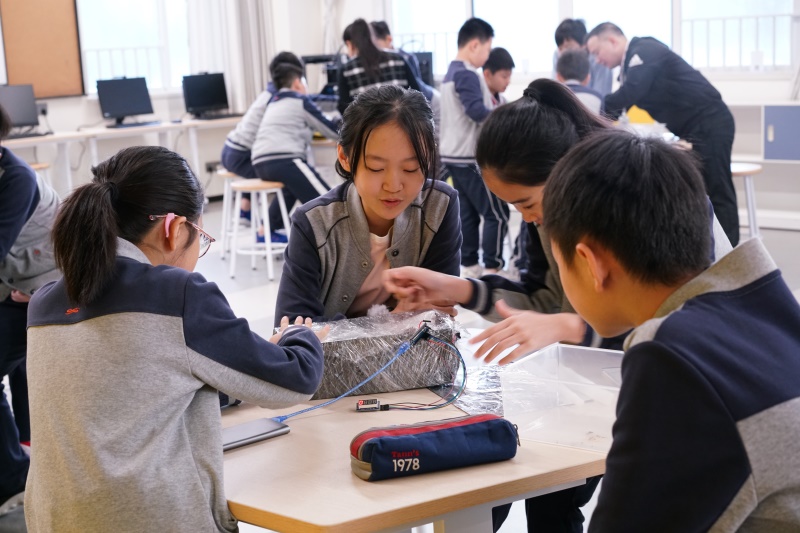
在STEAM课上,李音老师首先带领同学们学习了太阳能热水器的相关知识,并提供材料给学生们制作太阳能热水器。彭平老师讲解了测量温度的工作原理及测量工具在热水器的放置位置,发放学生们在人工智能课上制作好的测量工具。
In STEAM class, Ms. Li taught students some knowledge about water heater and presented them materials. Mr. Peng explained the principles measuring temperature and position of placing measuring tools at the water heater before giving out the tools made in AI classes.
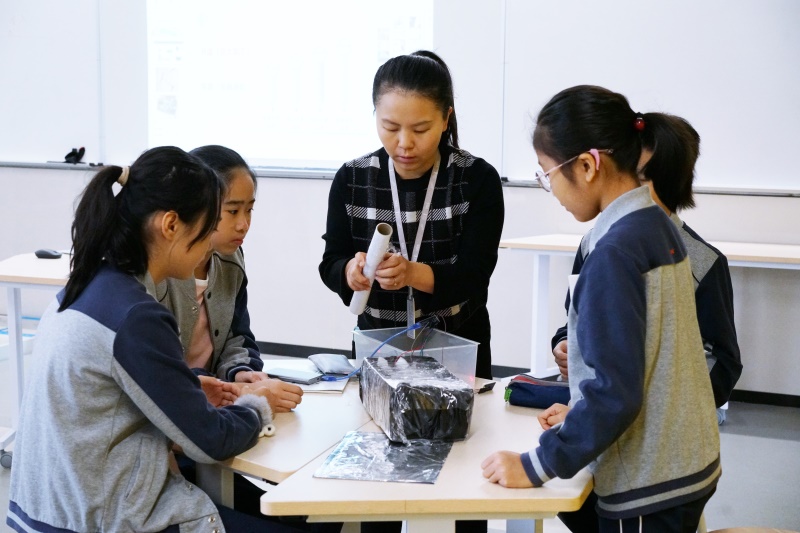
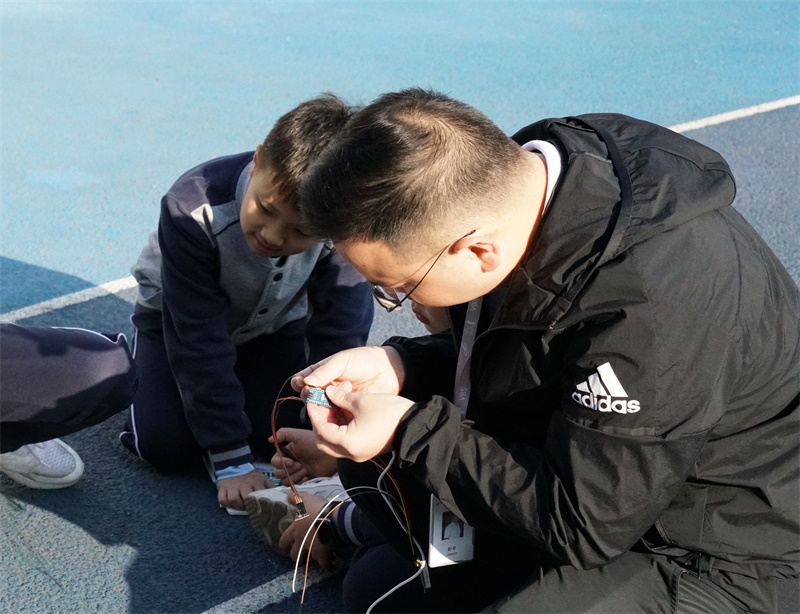
在学生们完成制作之后,两位老师带领同学们前往足球场,在太阳光照射下,测量太阳能热水器升温的情况。小组内大家分工合作,有记录的,有读取数值的,有拿锡纸做反光的。在测量过程中,有的小组测量的温度,从二十几度到五十几度,升温效果非常明显,证明热水器设计的比较合理;还有一些小组一开始没有升温,后面分析原因进行改良,很快温度变化也就明显了。最后,学生们做了本节课的总结和分析,分享了在实验过程中遇到的问题,认识到了自己的不足和改进方法。
Once they produced their water heaters, two teachers took students to the football pitch to test how temperatures inside the water heater rose. Students worked in teams - reading the values, taking records and taking aluminium foil to reflect sunlight. During the process, some groups had a reasonably well design of water heater to achieve temperature rising from 20 to 50. Other groups might not have the same results but obtain significant rise in temperatures after modifications. At last, students had their analysis and conclusion for this class to share their ideas on the issues they had during the experiment to recognise their weakness and how to improve afterwards.
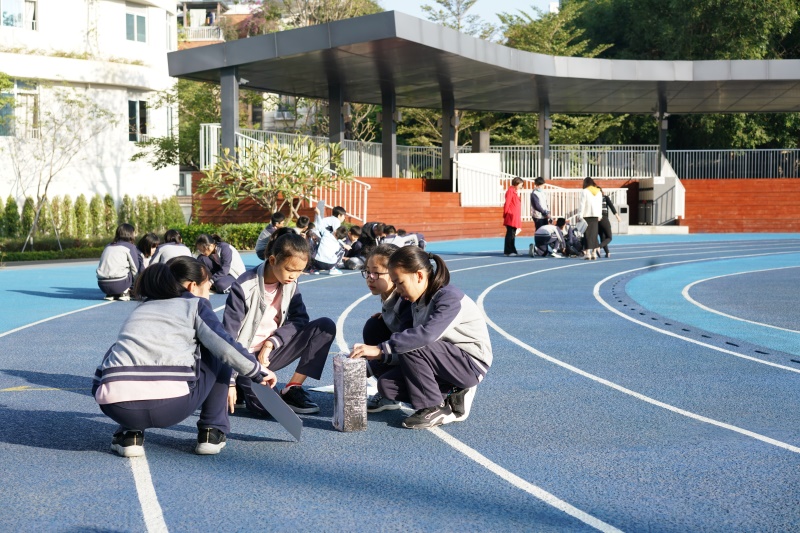
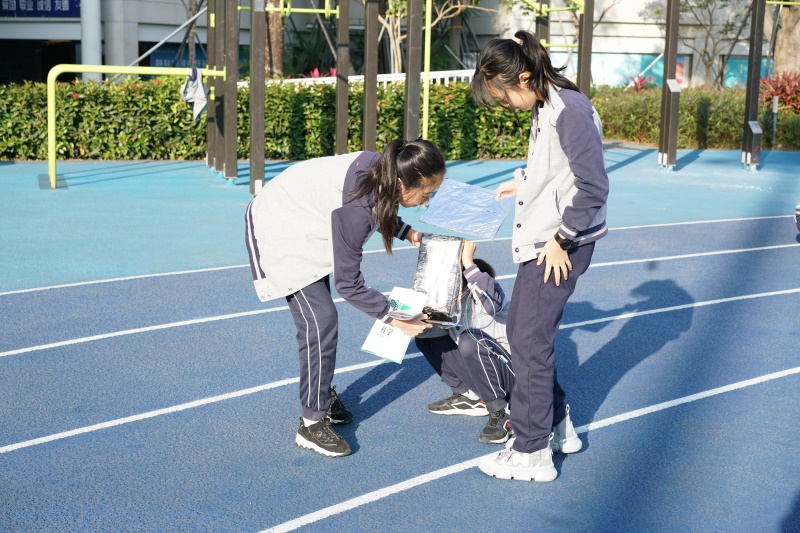
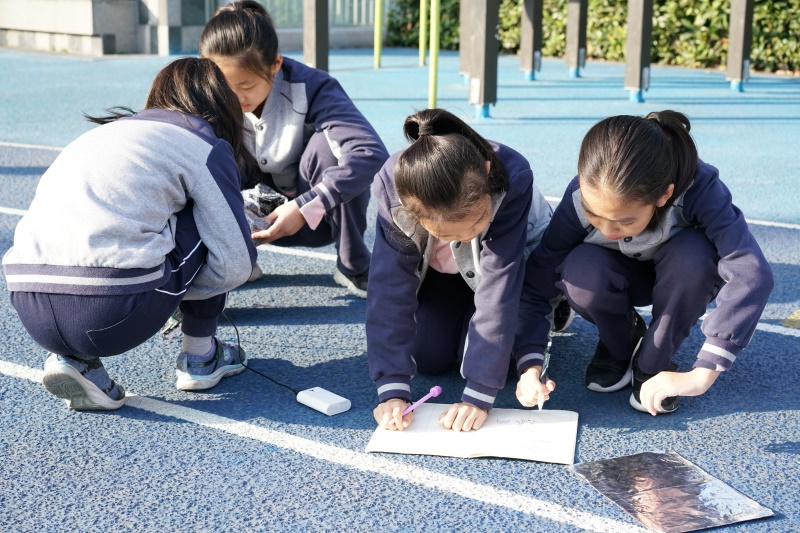
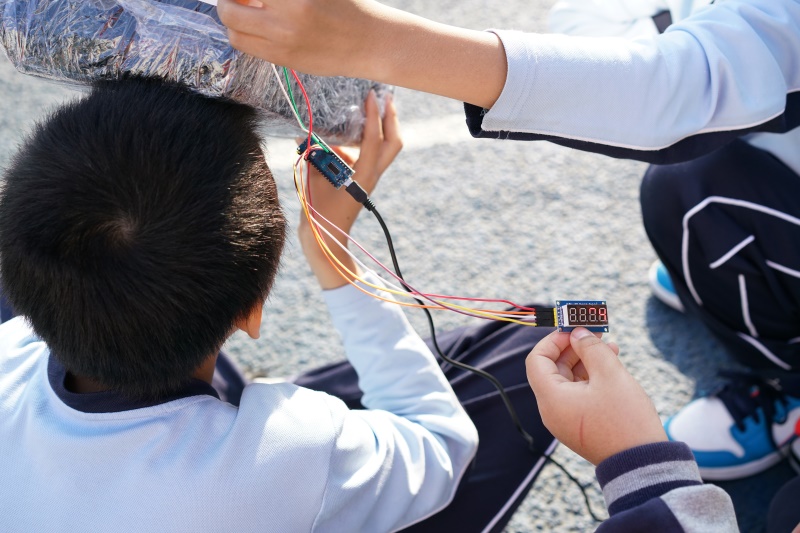
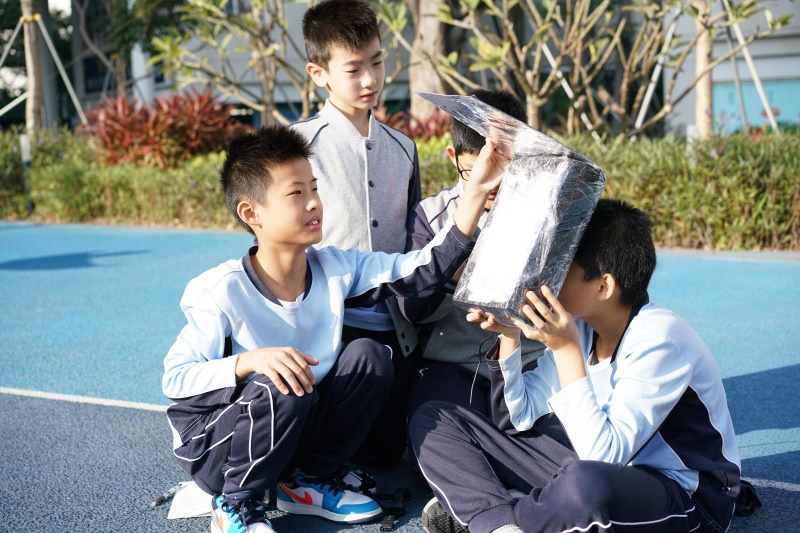

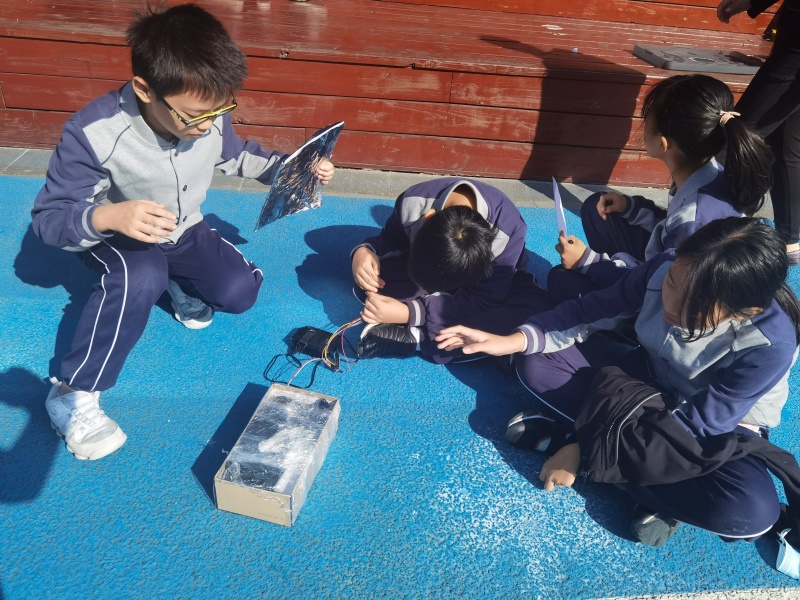

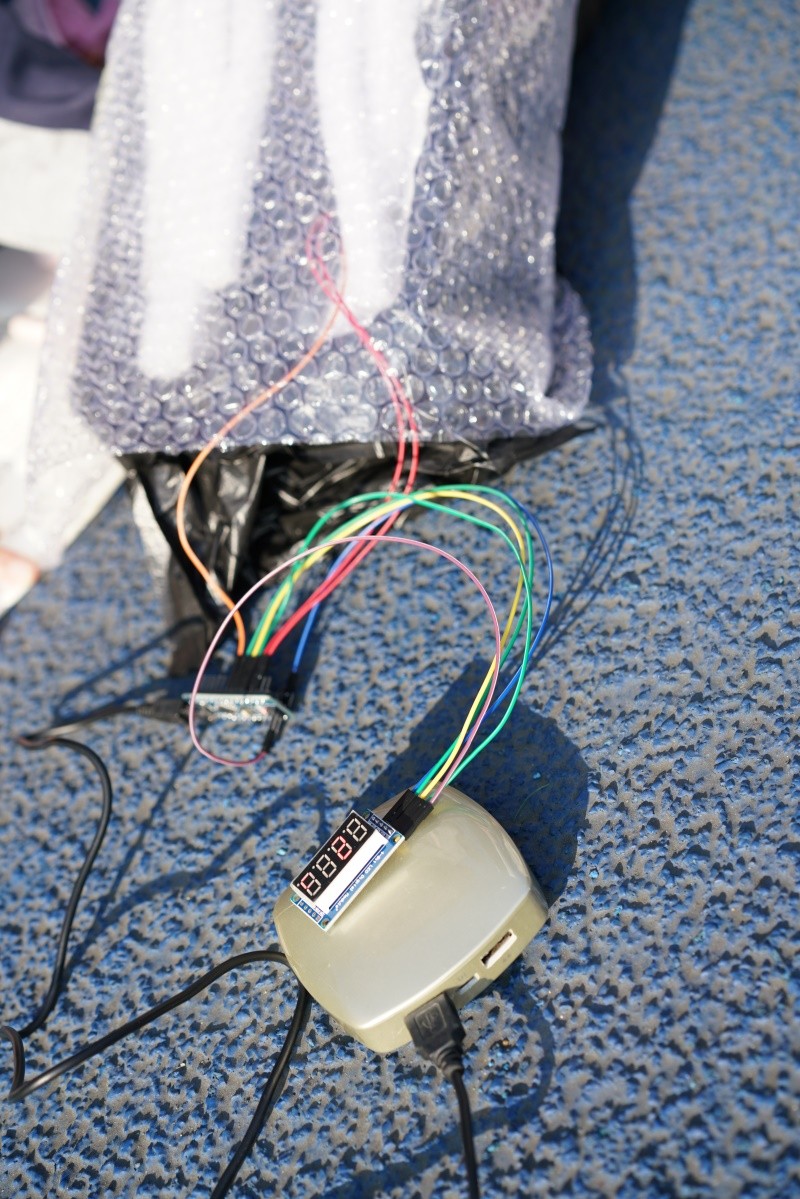

STEAM课的开展,是VBS培养人格健全、学力卓越,具有国际视野和家国情怀,敢于创造美好未来的世界公民的重要举措。本次跨学科融合课程的实践,让VBS学子充分体会到了运用科学与人工智能知识相结合解决实际问题的乐趣,激发了学生进行科学探究的内驱力,每个团队都能乐于合作、交流、反思和改进,锻炼了学生团结协作、敢于创新的能力,同时增进了学生的全局性理解力。学生们深刻地认识到科技的发展能促使人们更好地利用自然资源,纷纷表示非常期待再上这么有趣的STEAM课。
The implementation of STEAM classes is a key measure of VBS cultivating global citizens who possess sound personality, academic excellence, international horizons, patriotism and the courage to create a better future. This practice of inter-disciplinary studies has allowed students to enjoy applying AI and Science knowledge to solve real world problems, to motivate them to research on science and nurtured their ability to work in teams (cooperate, communicate, reflect and improve), innovate and see the bigger picture. Students realise the technology has facilitated mankind to utilise natural resources and expext to have such STEAM class in future.
资料提供/彭平
编辑/燕子
翻译/赖丁慈
Document provider: Mr Peng
Editor: Linda
Translated by DC Lai
万双网讯 为激发学生科学探究的内驱力,培养学生面向未来的思维技巧,12月2日,万科双语学校科学与人工智能老师在五年级开展了理论与实践相结合的STEAM融合课程,带领学生制作太阳能热水器及测量太阳能热水器的升温及保温情况。
VBS News Net: To motivate students to research on science and cultivate future-centric thinking skills, the STEAM integration class to combine theories and practice for Primary 5 students was conducted by AI and Science teachers on 2nd December at VBS to lead students to make solar power water heaters and measure their conditions to maintain the temperatures.
本堂STEAM课(《做个太阳能热水器》)筹备了一个多月,由科学老师李音与人工智能课老师彭平共同打造。上课伊始,在老师的引领和孩子的热烈讨论中,同学们知道了太阳能热水器是一种光热转换器,具有节能、环保、安全的优点,以及太阳能热水器的效能和所采用的材料、结构、运用的原理有关。但是产品的设计,不仅要考虑构造,还要考虑材料的选择、依据怎样的科学原理、如何方便实用以及怎么能精准地测得温度的变化。这些都是本节课孩子们运用5c能力去解决的一系列问题。
After a month's preparation, VBS Science teacher Ms. Li Yin and AI teacher Mr. Peng Ping delivered this STEAM class. Guided by teachers at the beginning of class, students began their discussions and understood that solar power water heater converted light to energy with the advantages of energy-saving, environmental-friendly and safe as well as principles, efficiency and materials used. Yet the design. This was the key issues for 5C students to solve.

李音老师和彭平老师根据研究任务和要求进行了有目的的设计,计划让孩子们在讨论中发现问题,通过人工智能学到的知识和科学知识的铺垫,再经过团队的协作和努力,精细地解决问题。为了补充更多的人工智能知识,彭平老师对学生进行了3个课时的教学,让学生们学会用Linkboy编程编写测量温度的程序,并通过电子模块实物连接,真实体验温度的测量。这样能解决此次活动的核心问题,从而更精准地量出温度的变化,解决了传统教学中使用温度计造成误差的问题。
Ms. Li and Mr. Peng designed the tasks to be completed in class accordingly to allow students to find questions through discussions, solve them by teamwork and apply knowledge learnt in AI and Science classes. Mr. Peng spent 3 periods to teach Linkboy Programming to write programmes to measure temperatures to connect with electric modules to experience the process of measuring temperature. This would solve the key issue for this session - the accurate measurement of the temperature without having errors by theomometers.

在STEAM课上,李音老师首先带领同学们学习了太阳能热水器的相关知识,并提供材料给学生们制作太阳能热水器。彭平老师讲解了测量温度的工作原理及测量工具在热水器的放置位置,发放学生们在人工智能课上制作好的测量工具。
In STEAM class, Ms. Li taught students some knowledge about water heater and presented them materials. Mr. Peng explained the principles measuring temperature and position of placing measuring tools at the water heater before giving out the tools made in AI classes.


在学生们完成制作之后,两位老师带领同学们前往足球场,在太阳光照射下,测量太阳能热水器升温的情况。小组内大家分工合作,有记录的,有读取数值的,有拿锡纸做反光的。在测量过程中,有的小组测量的温度,从二十几度到五十几度,升温效果非常明显,证明热水器设计的比较合理;还有一些小组一开始没有升温,后面分析原因进行改良,很快温度变化也就明显了。最后,学生们做了本节课的总结和分析,分享了在实验过程中遇到的问题,认识到了自己的不足和改进方法。
Once they produced their water heaters, two teachers took students to the football pitch to test how temperatures inside the water heater rose. Students worked in teams - reading the values, taking records and taking aluminium foil to reflect sunlight. During the process, some groups had a reasonably well design of water heater to achieve temperature rising from 20 to 50. Other groups might not have the same results but obtain significant rise in temperatures after modifications. At last, students had their analysis and conclusion for this class to share their ideas on the issues they had during the experiment to recognise their weakness and how to improve afterwards.










STEAM课的开展,是VBS培养人格健全、学力卓越,具有国际视野和家国情怀,敢于创造美好未来的世界公民的重要举措。本次跨学科融合课程的实践,让VBS学子充分体会到了运用科学与人工智能知识相结合解决实际问题的乐趣,激发了学生进行科学探究的内驱力,每个团队都能乐于合作、交流、反思和改进,锻炼了学生团结协作、敢于创新的能力,同时增进了学生的全局性理解力。学生们深刻地认识到科技的发展能促使人们更好地利用自然资源,纷纷表示非常期待再上这么有趣的STEAM课。
The implementation of STEAM classes is a key measure of VBS cultivating global citizens who possess sound personality, academic excellence, international horizons, patriotism and the courage to create a better future. This practice of inter-disciplinary studies has allowed students to enjoy applying AI and Science knowledge to solve real world problems, to motivate them to research on science and nurtured their ability to work in teams (cooperate, communicate, reflect and improve), innovate and see the bigger picture. Students realise the technology has facilitated mankind to utilise natural resources and expext to have such STEAM class in future.
资料提供/彭平
编辑/燕子
翻译/赖丁慈
Document provider: Mr Peng
Editor: Linda
Translated by DC Lai
办学理念:让孩子站在未来中央
培养(成长)目标:培养(成为)身体健康、人格健全、学力卓越,具有家国情怀和国际视野, 敢于创造美好未来的中国公民。
地址:深圳市龙华区民治街道华南路80号
电话:0755-66866333
http://vbs.vanke.com
Vanke Bilingual School, Longhua District, Shenzhen
Educational Idea: Let our children experience the future.
Training objectives: our students will become citizen of China with good physical health, sound personality, excellent academic abilities, patriotism, international vision and the courage to create a better future.
Address: No.80 Huanan Road, Minzhi Sub-district, Longhua District, Shenzhen
Contact: 0755-66866333
http://vbs.vanke.com
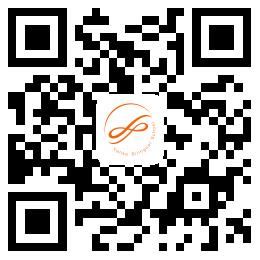
学校网站二维码
QR code of school website
学校公众号二维码
QR code of school official account